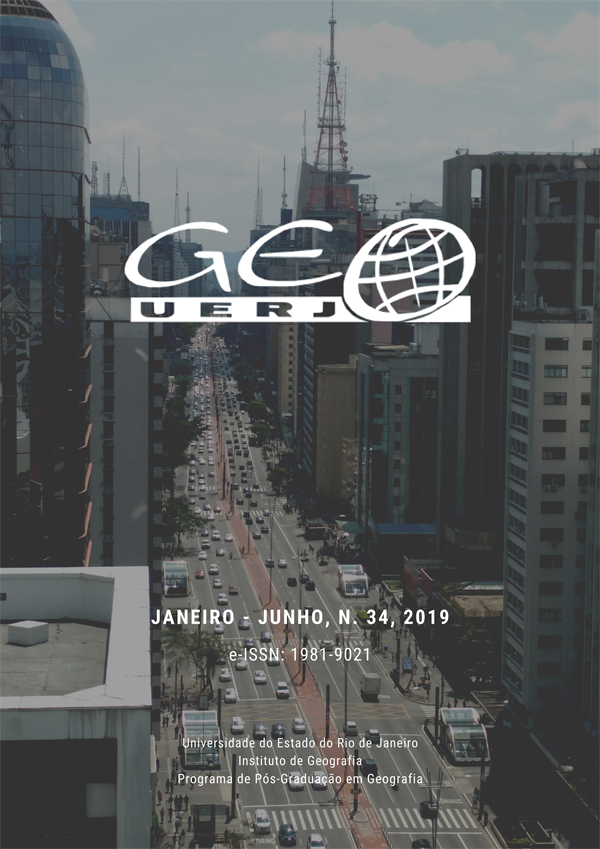ESPAÇO GEOGRÁFICO COMO CATEGORIA DE ANÁLISE DA QUALIDADE DE VIDA E SAÚDE DA POPULAÇÃO
DOI:
https://doi.org/10.12957/geouerj.2019.28418Palavras-chave:
Poluição atmosférica, Indicadores sintéticos, Indústrias, CSA e ComperjResumo
A região metropolitana do Rio de Janeiro (RMRJ) apresenta a maior densidade demográfica do país, sendo a segunda em concentração de indústrias e veículos e, por conseguinte, de poluentes atmosféricos que são nocivos à saúde humana. Ainda assim, recebeu nos últimos anos duas grandes indústrias (CSA e Comperj), extremamente poluentes. O objetivo deste estudo é identificar as características que tornam os grupos populacionais mais vulneráveis aos efeitos da poluição do ar para mapear a qualidade de vida da população da RMRJ. Para isso, foi construído o Índice de Condição de Vida e Saúde, com dados do Censo 2010, que reúne indicadores de saneamento básico, demografia, renda e educação, que mapeou a RMRJ com o software ArcGis. Os resultados mostraram que os municípios do Rio de Janeiro e Niterói, antiga e atual capitais do estado do Rio de Janeiro, apresentam maior percentual de população com qualidade de vida alta e muito alta, enquanto a periferia apresenta maior concentração de população com qualidade de vida média e baixa. A CSA e o Comperj localizam-se na periferia, onde o quadro social é bem ruim, tornando a população mais vulnerável.
Downloads
Downloads
Publicado
Como Citar
Edição
Seção
Licença
Os Direitos Autorais dos artigos publicados na Revista Geo UERJ pertencem aos seus respectivos autores, com os direitos de primeira publicação cedidos à Revista. Toda vez que um artigo for citado, replicado em repositórios institucionais e/ou páginas pessoais ou profissionais, deve-se apresentar um link para o artigo disponível no site da Geo UERJ.

Os trabalhos publicados estão simultaneamente licenciados com uma Licença Commons BY-NC-SA 4.0.


